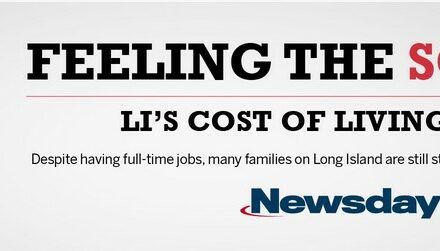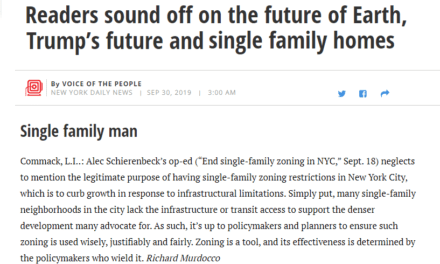Long Island is unnecessarily frustrating to all who live and work here. Each group has a unique set of frustrations that amounts to different Long Island.
For developers, their projects get caught up in a boondoggle of red tape, NIMBY protests and debated by uppity “policy wonks” who write snarky Young Island columns on their pet projects. Consistently their projects are delayed on the whims of local government. The playing field isn’t even for all. For some, the rules apply, and others, the rules don’t. The process is unbalanced. Their Long Island is red tape.
For environmentalists, Long Island is a place where land is being consistently swallowed by development, and enough isn’t being done to protect our waters. To them, the integrity of the region’s environment is compromised each and every day. Their Long Island is one of consistent decay.
For the young professionals, Long Island isn’t “Queens”-like enough, with no “cool” downtowns, cultural centers or transit access to whisk them to bustling tech jobs. Their Long Island is suburban and boring.
For the middle class, Long Island is too expensive. LIPA bills, property taxes, the price of gas. A 1% increase here, a 2% increase there. Each year the costs and overhead of running a house in the Nassau-Suffolk region is slowly strangling homeowners until they realize it and by then, it’s too late. Their Long Island is cripplingly cost-prohibitive.
For the so-called advocates, Long Island is a soap box. Our issues divide us, and so-called advocates pounce on the issues of the day. Affordable housing a hot topic? Pursue it. Green building seems to be a thing now… Why not- go for it! Storm hit us hard? Jump on-board. In their zeal for funding, the so-called advocates work with everyone and no one at the same time. A “Jack-of-All Trades” but master of none. The serious issues that plague our region are reduced to a press release here, a photo-op there. Their Long Island is opportunistic.
For government, Long Island is a Catch-22 of sorts. While they see their municipal coffers dwindle, the problems that need funding continue to grow. The public is uncooperative, developers whisper in their ear about promises of “increasing the tax base” and environmentalists are consistently crying foul. Further, political infighting taints the policymaking process, crippling the ability to take meaningful action. Their Long Island is forced inaction.
For me, Long Island is a place of unlimited potential. I regularly pour over census data, facts and figures, trends, read government documents and pour over maps. After doing research on particular I always feel that a deep frustration that more can be done. I feel that this region has promise.
To move forward, we must build off of the legacy of those who came before us, and utilize the potential of those who are coming after us. The community assesses their needs. Planners plan. Government approves and developers build. True planners use the best available data to drive their recommendations to government for action. Planning standards are used to shape developer site plans for the future development of Nassau and Suffolk. Environmental data tells us where to build, how to build it and what to protect.
We must address the realities our region faces head on, and ask the tough questions- are there too many school districts? Why are there such stark divisions of race and equity? Why are energy bills so high? Why must are we so dependent on fossil fuels? How do we attract jobs that capitalize on our unique assets? Should we be building housing for one age group or all? What type of economic growth should be avoided? How can we best protect our open space and waters? Should our counties be so dependent upon sales tax revenue? Should each township control land use? How can we wisely expand use of transit? How do we keep our young professionals without compromising our suburban form?
In an age when one of America’s largest cities can go bankrupt, we must realize that poor policy solutions have real consequences. Our patchwork quilt-like approach to Nassau and Suffolk’s problems are leading us down a dark road.
Overall we must sit back and look at the system- does it work? Questioning the process and realities we face should not amount to frustration. Rather, these questions should harden our desire to consistently make Long Island a better place to live for everyone.
Dr. Koppelman said to us that if a planner loses their sense of optimism, they might as well stop doing the job. He is correct. Planning requires tenacity, especially on Long Island. In fact, that tenacity is needed for everyone who decides to take a stake in Long Island’s future.
Despite all of this uncertainty, my Long Island is filled with optimism.













